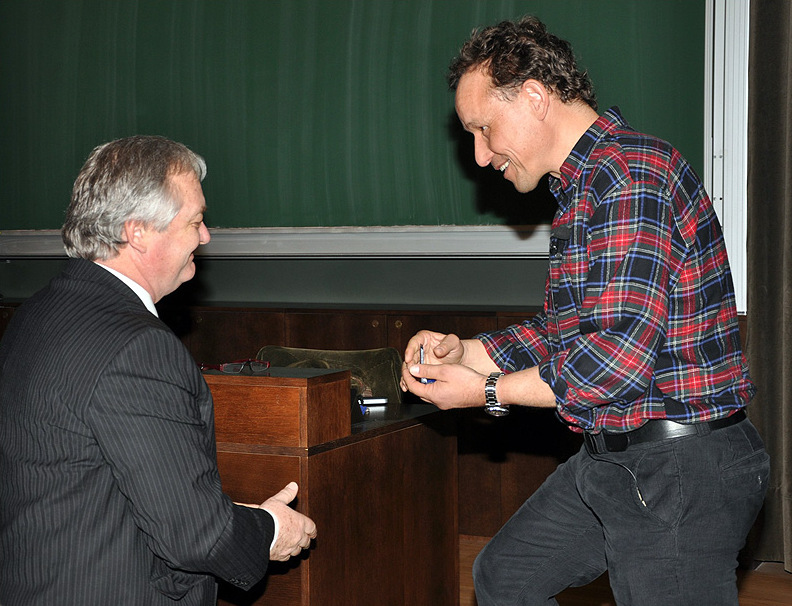Prof. Christian Haass (Ludwig-Maximilians-Universität, Munich, Germany)
The Molecular Clock Work of Alzheimer's Disease
Abstract
In my laboratory we focus on the generation of Amyloid ß-peptide (Aß), which accumulates during aging in our brains and becomes deposited as insoluble aggregates called amyloid plaques. Back in 1992 I made the very surprising observation that Aß is produced constantly throughout life. These observations changed the concept of AD pathogenesis, and it is now clear that AD constitutes a major part of normal aging. Since Aß has a central role in AD pathology, we investigate the cellular mechanisms behind its generation. Aß is generated by proteolytic processing involving two types of proteases, ß-, and γ-secretase. Our work on γ-secretase focuses on its identification, function, assembly, and reconstitution. It turned out that γ-secretase cleaves its substrates multiple times within the membrane. Moreover, by identifying the active site motifs of the γ-secretase activity in presenilins, we were able to define a completely novel class of aspartyl proteases of the GxGD type. By using C. elegans and zebrafish as a model system in combination with biochemical and cell biological technologies, we could demonstrate that presenilins are directly involved in the Notch signaling pathway. However, PS alone could not perform proteolysis and we could demonstrate that a complex composed of four different proteins is required to reconstitute γ-secretase activity in yeast. Currently we are investigating the assembly of the γ-secretase complex and the interaction sites of the individual components. In parallel we are studying the function and regulation of ß-secretase (BACE1). Here we are specifically interested in regulative mechanisms, which may be responsible for the increased ß-secretase activity during aging. First evidence suggests a posttranscriptional mechanism via the 5’ untranslated region of the ß-secretase mRNA. The function of ß-secretase and its homologues is investigated in zebrafish and mice. We could demonstrate that ß-secretase is required for myelination via neuregulin signaling. More recently we also started to investigate the cellular mechanisms of frontotemporal lobar dementia with ubiquitin positive deposits as well as amyotrophic lateral sclerosis. Here we are again very much interested in the cellular mechanisms how genetically inherited mutations in the genes encoding for example TDP-43, FUS and Progranulin cause neurodegeneration.




